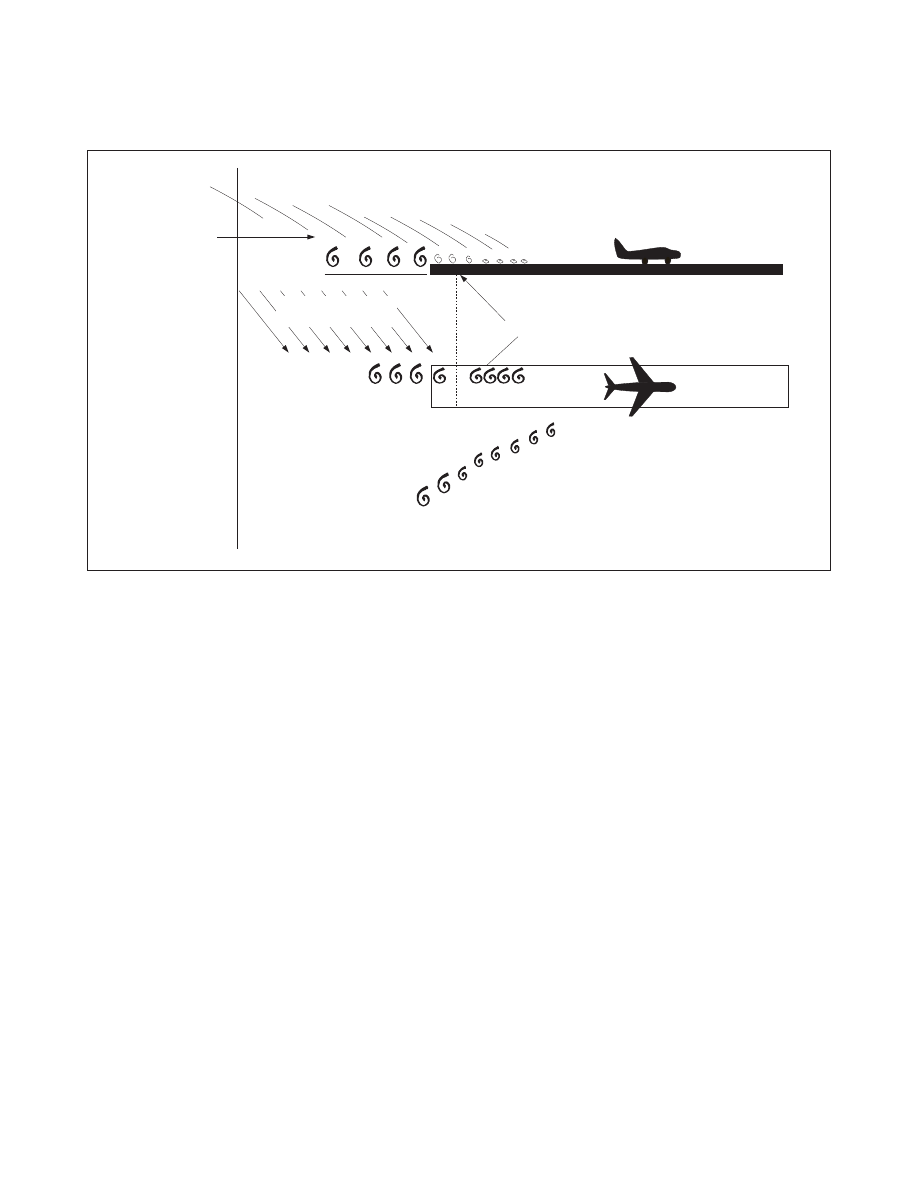
4/20/23
AIM
FIG 7
−
4
−
7
Vortex Movement in Ground Effect
−
Tailwind
Light Quartering
Tailwind
Light Quartering
Tailwind
x
Tail Wind
Tail Wind
Touchdown Point
Touchdown Point
7
−
4
−
5. Operations Problem Areas
a.
A wake turbulence encounter can range from negligible to catastrophic. The impact of the encounter
depends on the weight, wingspan, size of the generating aircraft, distance from the generating aircraft, and point
of vortex encounter. The probability of induced roll increases when the encountering aircraft’s heading is
generally aligned with the flight path of the generating aircraft.
b.
AVOID THE AREA BELOW AND BEHIND THE WAKE GENERATING AIRCRAFT, ESPECIALLY
AT LOW ALTITUDE WHERE EVEN A MOMENTARY WAKE ENCOUNTER COULD BE
CATASTROPHIC.
NOTE
−
A common scenario for a wake encounter is in terminal airspace after accepting clearance for a visual approach behind
landing traffic. Pilots must be cognizant of their position relative to the traffic and use all means of vertical guidance to
ensure they do not fly below the flight path of the wake generating aircraft.
c.
Pilots should be particularly alert in calm wind conditions and situations where the vortices could:
1.
Remain in the touchdown area.
2.
Drift from aircraft operating on a nearby runway.
3.
Sink into the takeoff or landing path from a crossing runway.
4.
Sink into the traffic pattern from other airport operations.
5.
Sink into the flight path of VFR aircraft operating on the hemispheric altitude 500 feet below.
d.
Pilots should attempt to visualize the vortex trail of aircraft whose projected flight path they may encounter.
When possible, pilots of larger aircraft should adjust their flight paths to minimize vortex exposure to other
aircraft.
Wake Turbulence
7
−
4
−
5